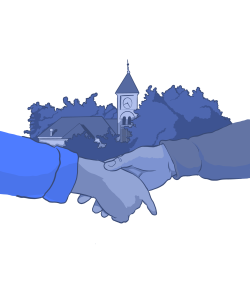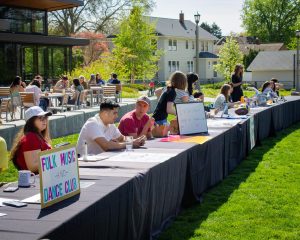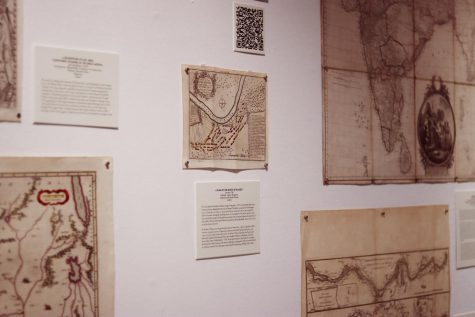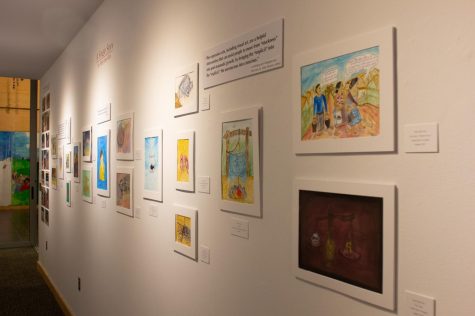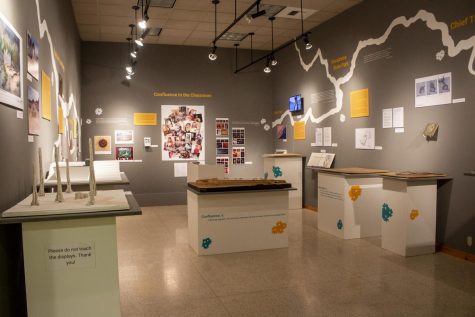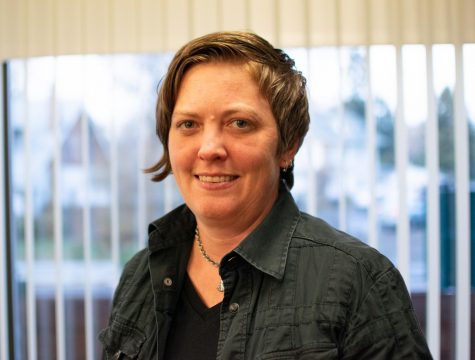Encountering Marcus and Narcissa
October 1, 2018
In response to the defacement of the Narcissa Whitman painting and the Marcus Whitman statue that stands just off campus, the Encounters syllabus committee added a new unit this year. The unit centers around the statue, as well as the Maxey Museum exhibit entitled “A Proper Monument?”
The faculty tried to turn the defacement into a way to learn, according to Director of the Sheehan Gallery and Encounters professor Daniel Forbes.
“There was this interaction that occurred with this sculpture, and then when something like that happens, as a community, you have… an opportunity to choose how you’re going to respond to something like that. There were all sorts of ways it could have been approached,” Forbes said. “The faculty, after a lot of careful consideration [asked]… ‘How can we turn this into a teachable moment?… What sort of conversations can we have? What can we learn from this?’”
After the statue and painting were spray-painted in the spring of 2018, the Encounters Syllabus committee decided that a unit on the issue would create productive discourse on the issue with first years.
Adjunct Assistant Professor of General Studies and Art History Libby Miller curated the exhibit with the intention of provoking conversation.
“I guess I want students (and faculty and staff and community members) to come away with a sense that collective memory and object memories are complicated,” Miller wrote in an email. “I also want to steer the conversation away from an easy condemnation of those who lived in the past under the heading of ‘we know better now.’ We need to think about our own entanglements with the colonialist Whitman legacy.”
Students visit both the statue and exhibit in Maxey as part of the new unit, then discuss with their Encounters peers the history and reasons behind the defacement and original creation of the pieces.
First year Allie McCann agreed with the addition of the new unit to the Encounters class.
“I thought it was a very important inclusion into the curriculum because coming to Whitman, I didn’t know very much about the Whitmans’ history,” McCann said. “In a time where we are reevaluating the legacies of prominent figures, it’s important that we know the history of our own college’s namesake.”
Forbes also believes that the unit can help contribute not only to campus-wide discussion but to a national one.
“We’re at a time where examining our history is really important,” Forbes said. “What’s going on with that piece on campus, while different in some ways, resonates with conversations going on in the larger world.”
The exhibit features the restored painting of Narcissa Whitman, hung upside-down, as well as documents from Whitman’s archives.
Miller also addressed the effect of the exhibit’s various perspectives.
“I think these multiple voices are reflected in “A Proper Monument?” in ways that make it rich and confusing and thought-provoking in lots of good ways,” Miller said.
McCann found the exhibit’s goals fascinating.
“The juxtaposition between the monument and defacing of things was a very interesting idea,” McCann said. “What I got from it was the Proper Monument exhibit was trying to force people to re-evaluate the history of it, but not in a destructive way.”
Forbes enjoyed the inclusion of a museum exhibit as a document for students to study in particular.
“It’s really exciting to have a visual text, where you can really look at the complexity of visual language, look at the sculpture of Marcus Whitman as a genre,” Forbes said.
McCann did have one objection to the unit, however.
“I thought [studying the statue] was not the most effective use of our time, just because the college does not own the Marcus Whitman statue,” McCann said. “So as much as I personally think it should be removed or changed, we can’t actually do that because it’s not our own, but there still are monuments on campus that are dedicated to the Whitmans, like for example Prentiss Hall, because that’s named after Narcissa Prentiss Whitman.”
Forbes agrees that answers to the issues and complications of the monuments and discussions that surround them are challenging.
“I wish I had more pat, quick answers, but … objects are dimensional, and our reading of them, that becomes multidimensional as well,” Forbes said.




